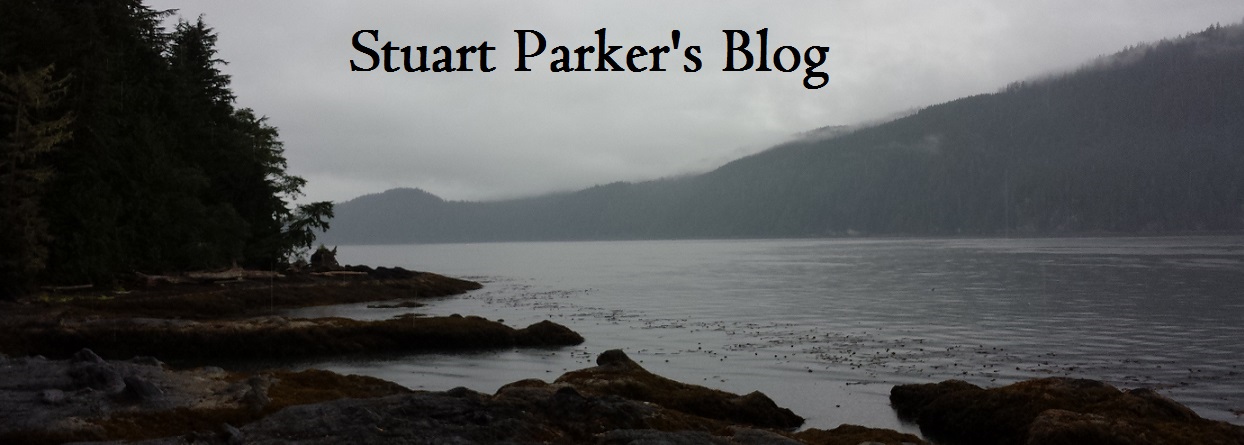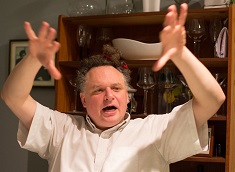Gordon Campbell killed my grandma.
I don’t mean this in a “fuck you Gordon, die in a fire!” kind of way. I like Campbell fine and think he went out on a high note as premier, with his audacious tax policies, that sought to undo some of the damage he did with his first round of tax policies a decade before.
It is more that my grandma was pretty damn tired of being alive by the time she was in her mid-90s. Always fashionable and fit, she could not handle the shame of getting around with a walker. You can purchase a stylish cane. There are no stylish walkers. She had also outlived more than a dozen bridge foursomes and was just too demoralized to go to all the work of assembling another bridge group, only to have its members die on her in a year or two.
The daughter of George Martin, a welder and Bolshevik soap-boxer (yes, an actual Bolshevik; he assiduously followed global communist politics and had taken a position on the Bolshevik-Menshevik split when it happened), my grandmother was also deeply demoralized by the rise of Third Way neoliberalism and the destruction of the world’s democratic socialist parties in the 1990s. So pissed off was she that she contributed her bookkeeping expertise to helping me build the BC Green Party, expertise she had last used to help the National Action Committee on the Status of Women (NAC) set up its Vancouver office in the 1970s.
So, when Gordon Campbell was elected BC premier in 2001 and proudly announced the repeal of the forty-hour work week in 2002, my grandmother was pretty sure that it was time to go.
My grandmother was born in 1908, four years after the BC legislature enacted the forty-hour work week. And she felt that she should never have had to live to see the day that this victory for working people, made before she was even born, would slip away. For her, it served as the final piece of punctuation marking the end of the aspirations of the socialist movement.
The political moment into which my grandmother was born during what Mark Twain termed “the Gilded Age,” was the time in which, around the world, socialists came of political age. The period that began in the 1880s and ended with the 1929 global economic crisis did not just contain the Mexican and Russian revolutions. It contained the founding of Britain’s Independent Labour Party in 1893 and its first election to national government in 1923.
As I have argued ad nauseam on this blog, we live in a time much like those years, with its rapidly widening wealth gap, ownership concentration, ballooning consumer debt, penchant for cross-dressing, chaotic international order and debate over women’s sport. The particular aspect of that time that I want to focus on in this essay is the collapse of “the left” as a political coalition.
History of the First Left
“The left” is a term that started as a literal description of a set of allied voting blocs in the French parliament in the lead-up to the Revolution of 1789. Initially, it simply referred to the collection of Estates-General members who favoured radical and revolutionary change. Dominated by liberals, almost from the outset it included socialists, secularists, suffragists, prohibitionists, Abolitionists, advocates of colonial devolution and supporters of land and tax reform. In the ensuing decades a similar “left coalition” coalesced the other great industrial democracies, Britain, Prussia, etc.
It made sense, during the nineteenth century, for members of the left to make common cause. The rising trade union movement was key in legitimating “the left” as a strategic political coalition as liberal parties made space on their parliamentary slates for candidates backed by trade union locals in the burgeoning industrial cities of the age. Class consciousness had not reached the point where individual labour candidates were viable in winner-take-all electoral systems and so liberal parties and trade unionists mutually benefited from their alliance.
While there were of course major conflicts within the left among its constituent groups, and especially between its dominant and original political grouping, the liberals, new political movements that, by virtue of a shared belief in modernization and reform, saw themselves as equally legitimate claimants to the mantle of the Left.
Conflicts between labour and capital were intense when it came to questions like the scale of permissible industrial action and the use of police as strike-breakers. But these were, to an extent, mitigated by shared left-wing beliefs and assumptions such as the status of women and children as protected classes of person within the workplace and without and a shared belief that freer trade and fewer tariffs would benefit both industry and the poor.
But in the 1890s, that shifted throughout much of the Anglosphere. In 1893, the Independent Labour Party was formed in Britain, ultimately resulting in the Labour Representation Committee splitting from the Liberal Party. And English speakers were actually late to the party. German’s socialists and trade union movement had abandoned their partnership with liberals in 1874. In France, the parliamentary divorce took place in 1885.
Throughout the Gilded Age, socialists and liberals would find themselves on the same side of certain issues and in accord on certain causes but these movements understood themselves to be adversarial and were, naturally, embittered by their recent divorces. But socialists, in particular, sought to make it clear that they were not part of some larger political community in which both they and the liberals were in fundamental accord. At both the movement level and in electoral politics, socialists sought to show their independence from liberals, reminding working class people that both liberals and conservatives were movements controlled by and representing “the bosses.”
Socialism and the Forty-hour Week in British Columbia
My grandma grew up in Gilded Age BC because her dad was blacklisted from dock work for his Bolshevik soapboxing, first in Glasgow and then in Belfast. Vancouver, British Columbia, was the western terminus of the British North American rail system, port with such severe labour shortages that communists, criminals and malcontents from the four corners of the earth could still find a decent day’s pay.
And the province had a strong and militant labour movement thanks to the Dunsmuir coal baron dynasty that controlled middle Vancouver Island with their own private army, occasionally assisted by the RCMP. Consequently, BC was one of the first places in the British Empire to elect socialists to its legislature.
Even before the capitalist members of the legislature had separated into the Liberal and Conservative parties, the Labour Party elected its first member in 1898. The following election, in 1903, BC’s first true multi-party election returned a Conservative government with a razor-thin majority, one that eroded over the course of the year, leaving the Tories in a minority in 1904.
Rather that voting with their erstwhile fellow leftists, the Liberals, to bring down the Tory government, they negotiated with Premier Richard McBride to enact a series of socialist policies, the best-remembered of which is the forty-hour work week.
BC’s is an early example of socialists not being cowed into working with liberals and progressives in service of some kind of putative larger left but it is hardly unique to this period. Rather than swearing fealty to one set of bosses or the other, socialist and labour parties and movements played the capitalists off against each other in an effort to secure the best deal for workers. This kind of audacious and often successful brinksmanship caused voters to begin electing socialists as governments in their own right, a political outcome that grew more common as the Gilded Age wore on.
History of the Second Left
But big things changed in the early 1930s with the rise of Stalin as the USSR’s sole hegemon, the rise of the Nazi movement, Franco’s victory in Spain and the realignment of liberal political economy by John Maynard Keynes and Franklin Delano Roosevelt. Beginning in the 1930s, responding to the growing consensus in the West that fascism was the greatest threat capitalist societies were facing, Stalin encouraged Soviet-aligned parties to throw themselves into “popular front” politics, not just joining but actively organizing grand anti-fascist, anti-conservative coalitions with progressives and liberals.
Even in places like Canada, where popular front politics never went anywhere electorally, the effects of Stalin’s decision, one shared by many socialists who suddenly found renewed common ground with liberals around basic issues like free speech and elections, was to restore the idea of “the left” as a grand coalition, a large and diverse political community, whose main constituent groupings were liberals, progressives and socialists.
Following the Second World War, the shared project of building the welfare state, albeit motivated by different reasons, kept “the left” together as a political and cultural community. When people said “left wing,” and “right wing,” they had clearly understood meanings. People could be “centre left” or “far left”; the left were always getting into arguments but the arguments were about the correct way to authentically be left-wing, for the most part.
At the height of the Cold War left consensus, social democrats were called “liberals in a hurry,” suggesting that there was not really much disagreement about the political direction society should head among those of the left, just the velocity at which the destination should be approached.
But all that changed in the 1980s and early 90s.
First, with the collapse of the Warsaw Pact and then Soviet Union, there was simply no foreign policy justification for liberals to support the welfare state. Those who had worked hardest to enact welfare state policies, leaders like Lester Pearson, John F Kennedy, Lyndon Johnston, and Richard Nixon were Cold War hawks who believed that matching or exceeding whatever material guarantees the USSR offered was critical to victory.
For the first thirty years of the Cold War, building the welfare state had been the logical means of both pacifying the domestic left with material concessions and roles in its construction and competing with the Soviets in the international field of public opinion, claiming that a capitalist welfare state, organized on Keynesian economics could outperform a “democratic centralist” one-party state when it came to delivering housing, healthcare, education, etc.
Suddenly, all that social spending ceased to double as defense spending.
Besides, much of the left was becoming entranced the Third Way, a kind of PG-rated neoliberalism that offered a sort of Thatcherism with a human face, especially attractive to liberals and progressives. But even many former socialists, especially those more class-adjacent to their liberal and progressive allies, suddenly discovered the virtues of austerity and free trade.
In battles over the rise of the World Trade Organization, the World Bank’s “structural adjustment” programs, investor rights treaties like NAFTA and Maastricht, with their secret courts and irreversible privatization provisions, socialists were utterly routed in the 1990s, whether in electoral contests, like the 1993 Canadian election that came close to eradicating the New Democratic Party or in the internal politics of big tent left-wing parties, where the likes of Bill Clinton, Tony Blair and Mike Harcourt routed the parties’ socialist factions.
Socialism After the Second Left
Socialists have reacted to this in a disappointing way. None of the optimism about socialism’s future and the rising power of labour that had ended the First Left were apparent in the 1990s. Socialists had not voluntary exited the left because their prospects looked better outside than inside. They had been marginalized, reduced to little more than mascots of a bygone age within the parties and larger movement culture of the left.
But instead of grimly accepting what had happened and marching forward on our, we socialists instead covered our defeat and humiliation in a rose-tinted nostalgia. “The left” was no longer a historically contingent alliance of disparate movements and interests but a sentimentalized identity rooted in the past.
To accept our defeat within the left was too much in the context of the massive geopolitical and economic setbacks we were experiencing, the collapse of industrial employment and private sector unionism. So, the worse the left treated socialists, the more explicitly anti-socialist its social values and political ideas, the more socialists sentimentally idealized “the left” not as a political possibility in the present but as a post-political social identity rooted in a story about the past, about one’s political and moral lineage and pedigree.
Socialists’ stirring speeches about the moral virtue, noble history and their unshakeable allegiance to a floating signifier called “the Left” have, of late, been in inverse proportion to their actual power and relevance on the contemporary left. The left doesn’t need or want them. It has achieved its current political hegemony by reuniting left-progressives with right-progressives. It has achieved its current electoral power by building a coalition of the private and public sector managerial classes and those who hope to enter them. Socialists and workers are nothing short of an inconvenience on today’s left. Hence its now-constant disparagement of working people.
Like it or not, if socialists ever want to work with the left again, it won’t be by pretending we have not been evicted. It will be the way we did during the Gilded Age, through brinksmanship and careful, strategically rational agreements an alliances. Sentimentally pretending we are still part of the left is the most effective way for socialists to give away the little remaining power we have.
We have to get back to building socialism outside the left, operating independently of the left and we have to get over this idea that the owner class somehow has worse cooties than the managerial class. Because evidence does not support that view. A lot of workers have got there. Maybe if we did, we could actually get something done like, I don’t know… bringing the forty-hour work week back to BC.


